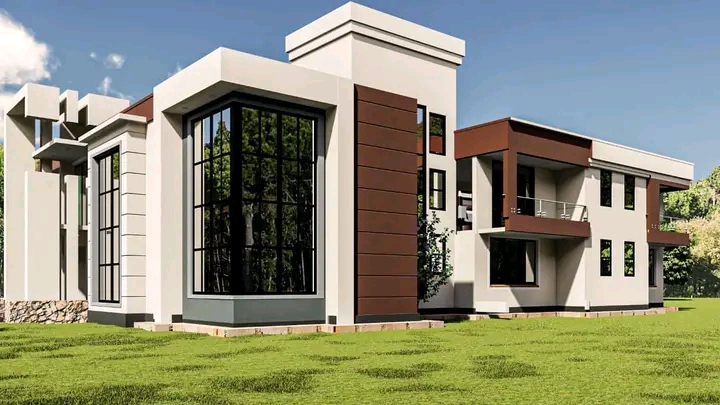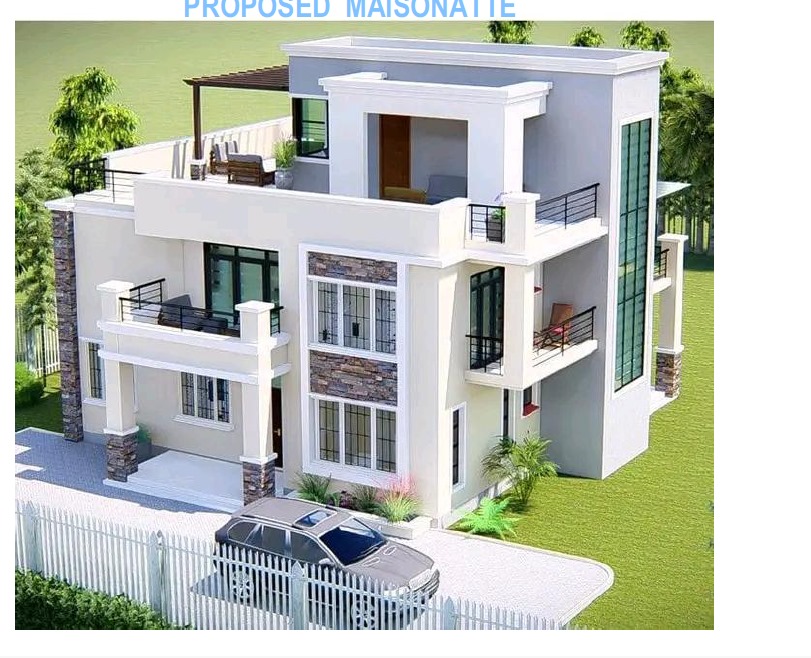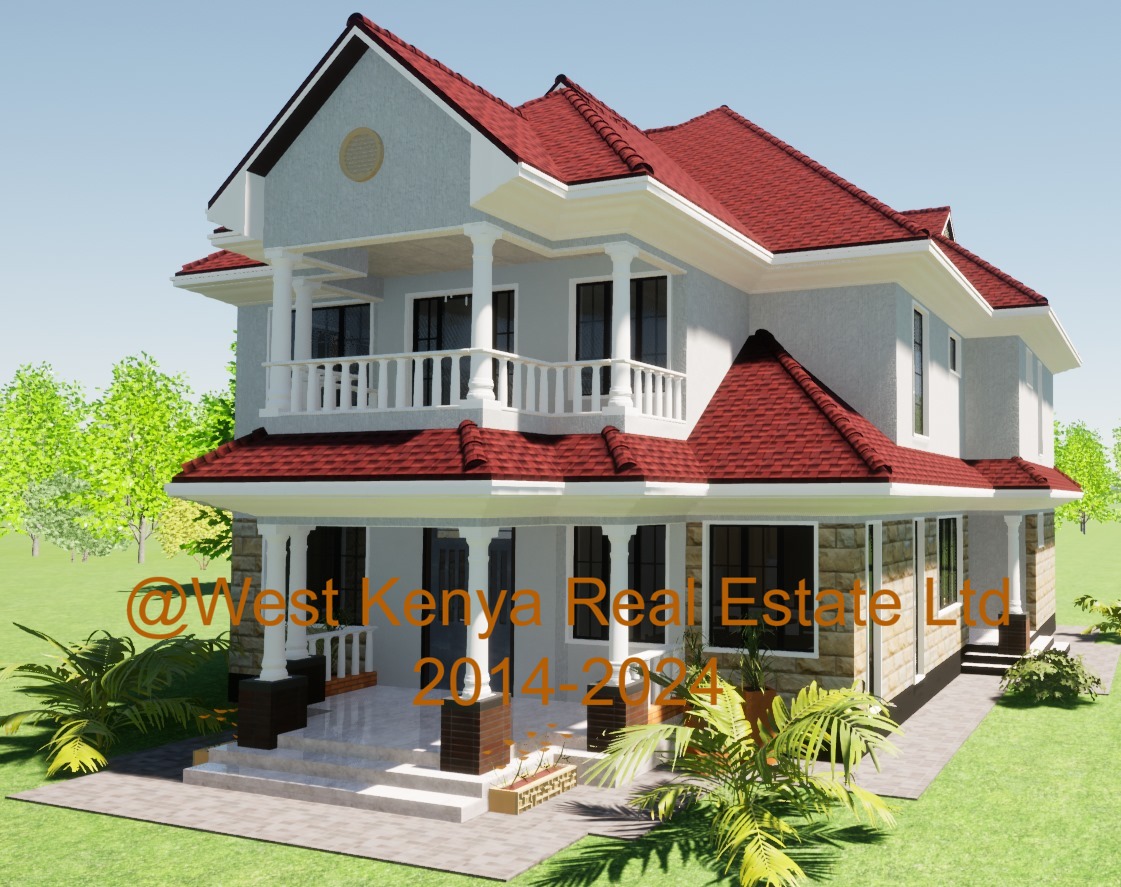A Complete Guide to House Designs in Kenya and Their Estimated Costs

1. Introduction
Homeownership is rapidly becoming a top priority for many Kenyans, driven by the desire for financial security, independence, and long-term investment. Whether you’re building in an urban center or rural setting, choosing the right house design is one of the most important decisions you’ll make. With evolving tastes, new technologies, and a growing demand for sustainable solutions, house plans in Kenya have become more diverse and accessible than ever.
Understanding the different house designs in Kenya—and the estimated costs involved—is essential for making informed choices that align with your lifestyle, land size, and budget. From traditional bungalows to sleek modern maisonettes, every design comes with its own set of features, space requirements, and price range.
In this complete guide, we’ll explore the most popular house designs in Kenya, highlight their key characteristics, and provide realistic cost estimates to help you plan your dream home with confidence.
2. Overview of House Designs in Kenya
House designs in Kenya have evolved to reflect both cultural heritage and modern living needs. Broadly, they can be classified into four main categories: simple, modern, traditional, and hybrid designs.
Simple house designs focus on functionality and affordability, making them ideal for first-time homeowners or rural developments. They often feature basic rectangular or L-shaped layouts with minimal finishes. Modern house plans, on the other hand, emphasize style and efficiency—with open layouts, flat or slanted roofs, and large windows for natural lighting. These homes are popular in urban and peri-urban areas.
Traditional designs draw from Kenya’s rich architectural heritage, incorporating elements like pitched roofs, natural stone finishes, and verandas. Meanwhile, hybrid designs blend the simplicity of traditional layouts with modern aesthetics, offering homeowners the best of both worlds.
Several factors influence which house design is suitable, including land location, plot size, family needs, and budget. For instance, urban dwellers with smaller plots may lean toward vertical maisonettes or compact modern bungalows, while larger rural plots can accommodate sprawling simple houses or traditional compounds.
Common configurations include:
- 2 to 3-bedroom bungalows for young families
- 4 to 5-bedroom maisonettes for larger households
- Self-contained servant quarters (SQ) for added utility or rental income
- Semi-detached units for dual-family setups
Understanding these categories helps homeowners align their preferences with available resources—ensuring that their affordable house designs are not only practical but also aligned with long-term goals.
3. Simple & Traditional House Designs
Simple and traditional house designs remain a staple across many parts of Kenya, particularly in rural and peri-urban settings. These designs prioritize function, cost-efficiency, and ease of construction, making them ideal for individuals seeking affordable house designs that meet basic living needs.
Key Features
These homes typically feature:
- Pitched roofs made of mabati or clay tiles for effective water drainage
- Compact floor layouts, often with 1–2 bedrooms, a living area, kitchen, and single bathroom
- Use of natural materials such as local stone, timber, and cement blocks
- Minimalist finishes that reduce both construction and maintenance costs
Typical Layouts
- 1-bedroom bungalow (approx. 30–45 sqm): ideal for retirees, individuals, or small families
- 2-bedroom house (approx. 60–80 sqm): suited for small families or starter homes
- Expanded rural homesteads: often self-built and spread across larger plots
These homes can also be designed for future phased expansions, a common practice in Kenyan rural homeownership.
Estimated Costs
- Cost per square meter: Ksh 18,000 – Ksh 28,000 depending on materials and finish level
- Average project cost:
- 1-bedroom: Ksh 600,000 – Ksh 1.2 million
- 2-bedroom: Ksh 1.3 million – Ksh 2.5 million
These estimates apply to basic finishes; more refined interior work will raise the budget.
Advantages
- Affordable construction and low maintenance over time
- Suitable for larger rural plots with fewer zoning restrictions
- Easy to build with locally available materials
- Flexible for self-builders or gradual upgrades
For anyone looking at house plans in Kenya on a tight budget or planning a rural home, simple and traditional designs remain a smart, functional choice that balances comfort with affordability.
4. Modern House Plans in Kenya
As Kenya’s urban and suburban areas expand, modern house plans are becoming the go-to choice for professionals, young families, and investors seeking stylish, functional, and future-ready homes. These designs reflect a global architectural shift towards minimalism, open spaces, and sustainability, all adapted to the Kenyan lifestyle.
Key Characteristics
Modern homes are defined by:
- Open floor plans that blend the living room, dining, and kitchen into one continuous space
- Large windows and glass panels to allow natural light and improve indoor-outdoor flow
- Use of sleek materials such as steel, glass, exposed concrete, and contemporary tiles
- Flat or low-sloped roofs for a clean, geometric aesthetic
- Integration of energy-efficient features, including solar panels, rainwater harvesting, and smart home systems

These features contribute to a functional yet elegant design suited for evolving lifestyles in Kenya’s towns and cities.
Common Modern House Designs in Kenya
- Contemporary Bungalows
- 2–3 bedrooms
- Ideal for small families or retirees
- Simple, single-level living with a modern twist
- Modern Maisonettes
- 3–5 bedrooms
- Perfect for growing families or professionals
- Multi-storey homes with ensuite bedrooms and entertainment areas
- Modern Villas
- High-end homes with 4–6 bedrooms, often gated
- Luxury features like rooftop terraces, home offices, and DSQs
- Common in areas like Karen, Runda, and Kitengela
Average Cost Estimates
- Mid-range modern homes: Ksh 35,000 – Ksh 55,000 per square meter
- High-end builds (villas and smart homes): Ksh 60,000 – Ksh 90,000 per square meter
- Example: A 4-bedroom maisonette (~180 sqm) can cost between Ksh 6.3 million – Ksh 9 million depending on finish quality
Suitability
Modern house plans are ideal for:
- Urban and suburban homeowners
- Middle- to high-income earners
- Investors targeting executive rentals or Airbnb markets
In 2025, these house designs in Kenya offer an excellent blend of luxury, technology, and practical living—making them an aspirational yet attainable option for many.
Related post: 1 & 2-Bedroom Apartment Designs That Sell Fast in Ruaka
5. Hybrid House Designs: Best of Both Worlds
Hybrid house designs are quickly gaining popularity in Kenya for their ability to combine the charm of traditional structures with the sophistication of modern house plans. These designs are perfect for homeowners who want a home that feels familiar yet stylish and contemporary.
What Are Hybrid House Designs?
They typically merge simple, cost-effective layouts—like compact bungalows or gable-roof houses—with modern upgrades such as:
- Open-plan interiors
- Large aluminum-framed windows
- Tiled finishes, granite countertops, and gypsum ceilings
- Outdoor patios and integrated landscaping
For instance, a flat-roofed 3-bedroom bungalow with minimalist exterior lines and a sleek interior is a common hybrid design in peri-urban areas like Syokimau, Ngong, and Kikuyu.
Another example is a traditional brick home with a pitched roof and veranda, finished with modern flooring, lighting, and cabinetry—blending rural sensibility with urban comfort.
Cost Considerations
- These affordable house designs typically range from Ksh 25,000 to Ksh 40,000 per square meter, depending on the level of finishes.
- They appeal to homeowners on a moderate budget who still want strong aesthetic appeal and a long-lasting structure.
Hybrid homes offer the perfect middle ground for style, cost, and practicality—making them an increasingly attractive choice in Kenya’s evolving housing market.

Related post: Top 600 Sq Ft Apartment Plans for 2 Bedroom Rentals in Kenya
6. Cost Breakdown by Design Type
Understanding the cost implications of different house designs in Kenya is essential for proper planning and budgeting. Below is a practical comparison of various house types based on estimated construction costs per square meter and typical total project costs for a 3-bedroom unit.
| Design Type | Approx. Cost per SQM | Total Cost (3BR Example) | Ideal For |
| Simple Bungalow | Ksh 25,000 – 35,000 | Ksh 2.5M – 3.5M | Rural areas, low-income earners, first-time buyers |
| Modern Bungalow | Ksh 35,000 – 50,000 | Ksh 3.5M – 5M | Urban middle-class homeowners |
| Maisonette | Ksh 45,000 – 70,000 | Ksh 6M – 10M | Professionals, growing families |
| Luxury Villas | Ksh 80,000+ | Ksh 12M+ | High-income earners, luxury lifestyle seekers |
These cost estimates typically include:
- Labor and contractor fees
- Materials: cement, steel, roofing, windows, finishes
- Internal and external finishes: tiling, paint, cabinetry
- Architectural and engineering plans
- Municipal permits and statutory approvals
🏗️ Factors Affecting Cost
While these figures provide a reliable guide, it’s important to account for variations due to:
- Regional cost differences: Construction in Nairobi or coastal areas may be more expensive than in upcountry towns.
- Inflation: Rising material prices, especially cement, steel, and paint, may impact final budgets.
- Design complexity: More intricate modern house plans often demand skilled labor and high-end materials.
Related Post: Best Flat Roof House Designs for Your Home in Kenya
📌 Choosing the Right Option
Those seeking affordable house designs may find great value in compact bungalows or hybrid styles. On the other hand, professionals or larger families may prefer the vertical space and separation of a maisonette. Ultimately, aligning your budget with your lifestyle and long-term goals is key to successful homeownership in Kenya.

7. Factors That Affect House Design Costs in Kenya
When evaluating house plans in Kenya, it’s important to understand the key variables that drive construction costs beyond the basic design. These factors can significantly impact your final budget:
🏞️ Land Location and Topography
The geographical location of your land affects accessibility, availability of materials, and labor costs. Building in urban areas like Nairobi or Mombasa is typically more expensive than rural zones. Additionally, sloped or rocky terrains require extra groundwork, raising construction costs.
🧱 Finishes and Material Choices
Material selection has a huge bearing on the final look and cost of your home. Imported tiles, hardwood finishes, and custom cabinetry can quickly increase expenses, while locally sourced or prefabricated materials can make affordable house designs more feasible.
🧑💼 Professional Fees
Engaging licensed architects, structural engineers, and quantity surveyors is vital for compliant, structurally sound homes. Their fees, usually a percentage of the construction budget, are part of the total cost for implementing quality house designs in Kenya.
📄 Regulatory Compliance
Approval fees from county authorities, NEMA, and NCA must also be factored in. Delays or non-compliance can increase costs or halt your project altogether.
Being aware of these cost drivers ensures smarter budgeting and realistic expectations when choosing your ideal house plan in Kenya.
8. Where to Find Quality House Plans in Kenya
As the demand for personalized and modern housing grows, there are now several reliable places to find high-quality house plans in Kenya that cater to different styles, budgets, and locations.
🖥️ Online Architectural Platforms
Numerous websites and digital marketplaces now offer pre-designed modern house plans. These platforms allow prospective homeowners to browse 2D and 3D house plans based on size, budget, and style. They are a great starting point for inspiration and cost comparison, especially for those exploring options remotely.
🏢 Certified Local Architects and Design-Build Firms
Working with registered architects and local design firms remains the most effective route to getting a plan tailored to your needs. These professionals offer site-specific designs, accurate cost estimates, and can help navigate building approvals and project execution.
Related post: Best Flat Roof House Designs for Your Home in Kenya
📍 Customization is Key
Even if you buy a pre-drawn plan online, you’ll need to adapt it to your specific plot size, soil condition, and local county building regulations. Ignoring this step can result in compliance issues or unnecessary redesign costs.
When choosing house plans in Kenya, prioritize functionality, compliance, and site adaptability to ensure your home build goes smoothly from start to finish.
9. Final Tips for Budgeting Your Dream House Design
Building your dream home starts with smart financial planning. Begin with a realistic budget based on your income, location, and desired house size. Choose a design brief that aligns with both your vision and financial capability. Many house plans in Kenya can be customized to suit modest or flexible budgets.
Phased construction is a practical strategy—start with the essential structure and add features like outdoor patios or additional rooms over time. This approach keeps your project manageable while spreading out costs.
Above all, prioritize functionality over luxury finishes. A well-ventilated layout with natural light can be just as impactful as expensive décor. Invest in affordable house designs that meet your day-to-day needs without unnecessary complexity.
Finally, consult professionals early—architects, quantity surveyors, and engineers will help you avoid costly mistakes and ensure your home is both beautiful and structurally sound.

10. Conclusion
Kenya offers a wide range of house designs—from simple bungalows to luxurious villas—each with varying cost implications. Whether you’re interested in affordable house designs, modern house plans, or a hybrid layout, aligning your dream home with your budget and lifestyle is crucial for long-term satisfaction.
Understanding the estimated construction costs and choosing the right design can help you avoid financial strain while building a home that truly meets your needs. Explore professionally developed house designs in Kenya to ensure your project is well thought out, structurally sound, and future-ready.
Related post: ECO-FRIENDLY 4-BEDROOM HOUSE DESIGNS IN KENYA FOR SUSTAINABLE LIVING

3 thoughts on “A Complete Guide to House Designs in Kenya and Their Estimated Costs”